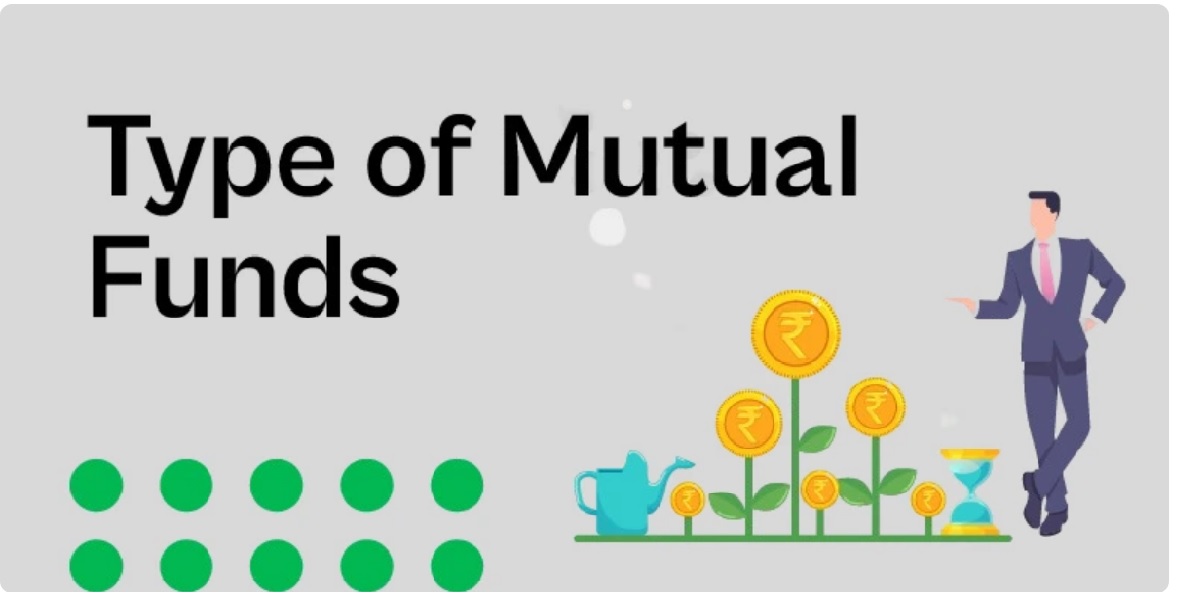Mutual funds are financial instruments where the money of multiple investors is pooled together and invested in assets such as bonds, stocks, shares, and other properties of mutual fund companies.
The benefits of mutual funds, as discussed in our previous article, make them one of the most preferred investment options today. Mutual fund investments allow investors to pool their money based on individual needs and goals, which are then managed by professional fund managers through various financial plans. These plans cater to diverse financial objectives and risk tolerance levels. In this article, we will explore the different types of mutual fund schemes.
Equity Mutual Funds
Primarily, equity mutual funds invest in stocks. These schemes offer higher returns but also carry significant risks. They are ideal for investors looking for higher returns by taking higher risks.
- Benefits: Equity funds provide better returns compared to traditional saving options like FD or postal savings. Investment in stocks has the potential for good returns over the long term.
- Risks: Equity mutual fund schemes are subject to high risks due to fluctuations in the stock market.
Examples of Equity Funds Schemes are Large Cap Fund, Mid Cap Fund, Small Cap Fund, Sectoral Fund, etc.
Debt Funds
Debt funds invest in fixed income instruments such as bonds, government securities, and other debt instruments issued by companies. These funds are ideal for investors looking for low-risk investments with stable returns.
- Benefits: These funds offer fixed returns and have lower risks.
- Risks: These funds offer lower returns, but the risks are also lower.
Examples of Debt Funds are Liquid Fund, Short-Term Fund, Corporate Bond Fund, Gilt Funds, etc.
Hybrid Funds
Hybrid mutual funds invest in a combination of different assets. These funds typically mix equity and debt funds, allowing investors to benefit from both the growth potential of stocks and the stability of bonds. Hybrid funds are an excellent option for investors looking for a mix of both.
- Benefits: Diversified investments help balance risk.
- Risks: There is still a risk associated with the equity portion of the investment.
Examples of Hybrid Funds are Balanced Fund, Aggressive Hybrid Fund, etc.
Liquid Funds
Liquid funds are ideal for investors who may need immediate access to funds in case of an emergency. These funds typically invest in short-term instruments like commercial papers, government bonds, and treasury bills, with durations typically shorter than 91 days.
- Benefits: High liquidity and low risk.
- Risks: Minimal risk and lower returns.
Examples of Liquid Funds are Liquid Fund, Treasury Bills, Commercial Paper, etc.
Index Funds
Index funds are a type of mutual fund or exchange-traded fund (ETF) that invests in market indices like Sensex, Nifty 50, Nifty Midcap 100, Nifty Small Cap 50, etc. This is a type of passive investment where fund managers do not directly pick stocks but instead invest based on the performance of these indices.
- Benefits: Low cost and returns based on market performance.
- Risks: There is more risk due to market fluctuations.
Examples of Index Funds are Sensex Index Fund, Nifty Index Funds, etc.
Sectoral Funds
Sectoral funds are a category of equity mutual funds that focus on a specific sector or industry of the economy. The goal is to capitalize on the growth potential and performance of companies operating in that sector, such as technology, pharmaceuticals, or infrastructure.
- Benefits: Higher returns if the selected sector performs well, and these funds often perform better than inflation.
- Risks: The performance is dependent on a specific sector, so if the sector underperforms, there is higher risk. These funds also carry liquidity and volatility risks.
Examples of Sectoral Funds are IT Fund, Pharma Fund, Infrastructure Fund, etc.
ELSS-Tax Saving Funds
Mutual funds can also be used to save taxes. These are known as ELSS (Equity Linked Savings Scheme) funds, designed by fund managers to offer tax-saving opportunities. These funds primarily serve the purpose of tax saving. By investing in these funds, you can avail tax exemptions under Section 80C of the Income Tax Act, 1961. You can claim up to ₹1.5 lakh in tax exemptions by investing in ELSS funds.
- Benefits: Tax savings of up to ₹46,800 and good returns over the long term.
- Risks: These funds come with a 3-year lock-in period.
Examples: Various companies’ ELSS (Equity Linked Savings Schemes).
Conclusion
Mutual funds are a great way to invest in various types of schemes. Each scheme has different objectives, benefits, and risks. Investing in mutual funds allows you to achieve higher returns, reduce risks, and benefit from professional management. Mutual funds are also a great option for small investors, as you can start with as little as ₹500 per month, and they offer liquidity at all times. If you invest for the long term, you can avoid the impact of market fluctuations. Mutual funds can be a great option for you. Therefore, investors should choose the right mutual fund scheme based on their investment plans, risk tolerance, and financial goals.


